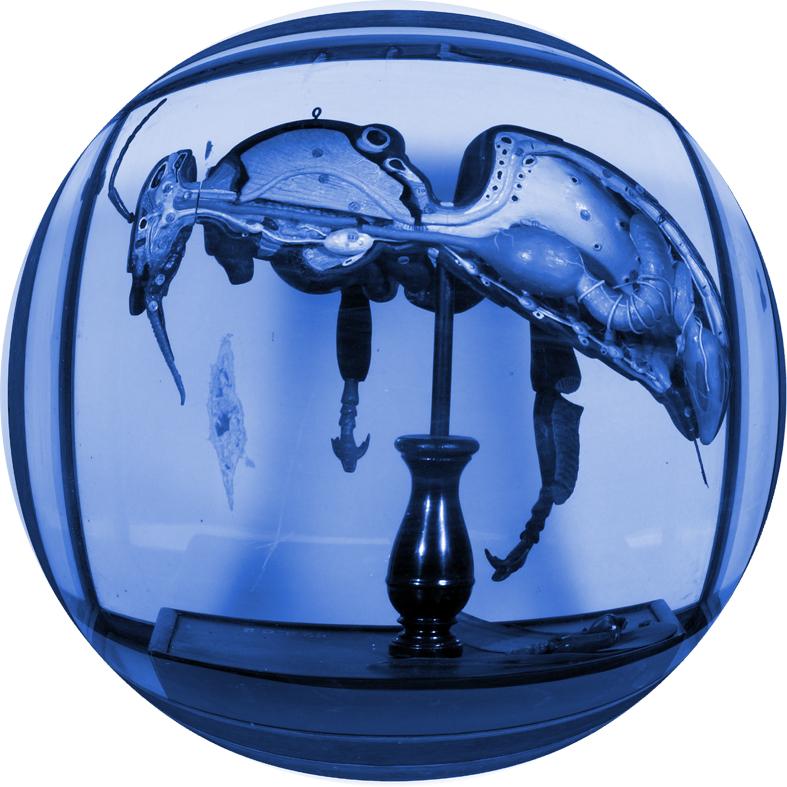Special Exhibition "Chamber of Curiosities KUM Version"
2013.11.01-2014.05.25
MODULE
The University Museum, the University of Tokyo (UMUT) and the Kyoto University Museum (KUM) are jointly organizing the Tokyo exhibition “Chamber of Curiosities KUM Version”, in the special exhibition space “Module” of the Intermediatheque, located within the JP Tower on the Marunouchi side of Tokyo station.
The present exhibition showcases to the public a selection of about fifty historical specimens from the collection of scientific specimens of the Kyoto University Museum, centered on the heritage of the former Third High School (kyūsei daisan kōtō gakkō).
As you may already know, the Kyoto University and the University of Tokyo are both national university corporations issued from public universities, but until now the occasion to organize a joint exhibition on a museum level based on scientific specimens did not arise. Moreover, even among museums in Japan affiliated to the Conference on University Museums, such a special exhibition based on a full-dress collaboration between two museums was never realized. In order to widely convey to society the raison d’être and scientific mission of University Museums in contemporary society, and in order reevaluate the value of scientific specimens accumulated in University Museums as natural resources, the organization of the present exhibition is highly significant.
Since being inaugurated anew in 1996 as a University Museum, the University Museum, the University of Tokyo (UMUT) has been organizing a series of special exhibitions subtitled “The University of Tokyo Collection.” These exhibitions were mainly motivated by the constitution of specimens and the cataloguing of the scientific material which had been naturally accumulated throughout the University campus, and they provided the occasion to promote a reevaluation of our historical scientific heritage spanning from the end of the Edo period to the first half of the Showa era. Specimens which had lost their identifying information, specimens which still hadn’t been described, or those which, as a natural consequence of that, were on the verge of being discarded, or in an condition equivalent to being discarded… Among the scientific heritage threatened by such a critical situation, the quantity of things which were rescued from the depths of oblivion on the occasion of their exhibition, and rehabilitated after having been described and catalogued, is by no means insignificant.
At the UMUT, aside from the “Collection” exhibitions, we also conduct activities aiming at collecting specimens, educational materials and prototypes which are already considered as having lost their scientific value, restoring them, describing them anew, measuring them, and exhibiting them. The special exhibitions which were realized under the theme of “Chamber of Curiosities” amount to such activities. Chambers of curiosities, which form the matrix of actual museums, are nothing else than a microcosmos of things born out of a pre-modern mode of thinking. There is no doubt that the initial exhibition spaces and display rooms established by the Imperial University, following the recommendation of employed foreign professors invited from the West, were such places. We can see there the luxuriant chaos, the inspirational source of creation which contemporary cultural facilities have long lost.
Among the scientific specimens and educational materials accumulated in the storage rooms of the former Imperial University, whether it be natural products or artifacts, many items are exceptional in their appearance, and still resist an aesthetic appreciation now, regardless of their scientific value. In other words, the divide between applied arts and science is not as abrupt as we may generally think. This is why, when measuring the global value of such items, we cannot solely adopt a scientific criterion. This is also the reason why an empiric value judgment resorting to a contemplative eye is needed. Above all, it is most important to look with one’s own eyes.
In order to invite people to better contemplate, exhibition devices are equally important. This is why we have to be particularly careful about the scenography of exhibitions. When exhibiting old scientific specimens, if we are always conscious of the atmosphere of 19th-Century display rooms from which they originate, and if we implement there some design work which responds to actual needs, it is because we aspire to activate our worn-out scientific heritage as a useful resource for our 21st-Century society.
Until now, the public activities of the UMUT have been carried out by using specimens from the University of Tokyo. For the first time, the present exhibition showcases precious scientific specimens held by the Kyoto University Museum to the public in East Japan. After Tokyo, the present exhibition is also expected to be shown at the Kyoto University Museum.
[Organizers]The University Museum, The University of Tokyo (UMUT) + The Kyoto University Museum (KUM)
[Support]Graduate School of Human and Environmental Studies, Kyoto University

